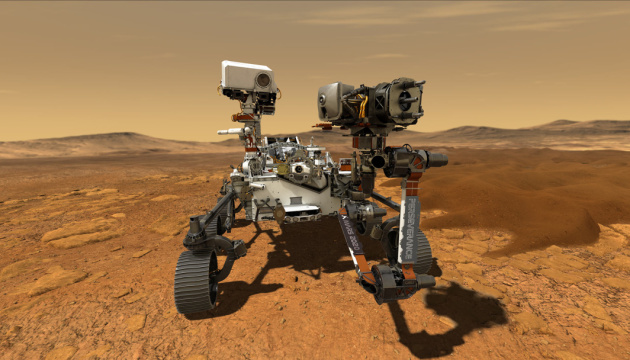Organic molecules found on the surface of Mars
- July 13, 2023
- 0
The Perseverance rover found evidence of organic compounds in Jezero Crater. The substances described are the main components of life on Earth. As reported by Ukrinform, this was
The Perseverance rover found evidence of organic compounds in Jezero Crater. The substances described are the main components of life on Earth. As reported by Ukrinform, this was


As reported by Ukrinform, this was reported by Scinews.
Scanning Habitable Environments using the Organic-Chemical Luminescence Raman Light Scattering (SHERLOC) instrument on NASA’s Perseverance rover has detected several types of aromatic organic molecules in the Maas and Seit Formations of Jesero Crater on Mars.
This discovery suggests that the Red Planet may have a more complex geochemical cycle than previously thought.
The presence and distribution of preserved organic matter on the Martian surface can provide important information about the Martian carbon cycle and its potential to support life throughout the planet’s history.
Several types of organic molecules have previously been found in Martian meteorites and in Gale Crater on Mars.
Estimating the diversity and detectability of organic matter anywhere on the Red Planet is important for understanding the scale and diversity of Martian surface processes and the potential existence of carbon sources.
From NASA’s Jet Propulsion Laboratory, Dr. “There are several hypotheses for the origin of organic matter on Mars, based on meteorites and studies of space missions,” said Sunanda Sharma and colleagues.
These include the formation as a result of the interaction of water with rocks, or the electrochemical reduction of carbon dioxide, or precipitation from external sources such as interplanetary dust and falling meteorites, but the researchers do not exclude a biotic origin.
“Understanding the fine-scale spatial relationships between minerals, tissues, and organic compounds is crucial to explaining potential organic carbon deposits on Mars. The SHERLOC instrument on the Perseverance rover is a tool that allows you to do this on the Martian surface,” the message reads.
Organic molecule signals were detected in all ten objects that SHERLOC observed at the bottom of Jezero crater.
Different indicators in the two formations within the crater indicate a different mineral association and spatial distribution that may be unique to each formation. The diversity of these observations can also provide insight into the different ways in which organic matter arises: perhaps by deposition with water or by synthesis with volcanic materials.
“Our results suggest that a more complex organic geochemical cycle may exist on Mars than has been described in previous in situ measurements, as evidenced by several individual organic samples,” the researchers say.
Thus, the basic building blocks for life could have existed for a long time (about 2.3-2.6 billion years ago), along with other chemical species yet to be discovered.
As reported by Ukrinform, a group of astronomers using the TESS space telescope discovered two sub-planets of the Neptune class.
Photo: NASA
Source: Ukrinform
As an experienced journalist and author, Mary has been reporting on the latest news and trends for over 5 years. With a passion for uncovering the stories behind the headlines, Mary has earned a reputation as a trusted voice in the world of journalism. Her writing style is insightful, engaging and thought-provoking, as she takes a deep dive into the most pressing issues of our time.